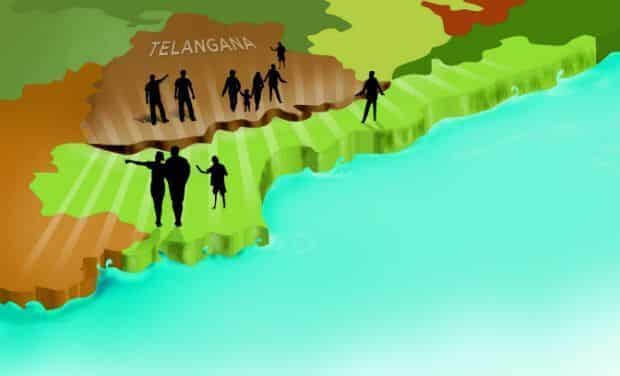An increasing number of states are looking at linguistic division, writes NOEL G DESOUZA

In 1952, a horrendous event took place in what is now Andhra Pradesh. Several people were undertaking a fast-unto-death campaign to force the government of India to create a state of Andhra from the Telegu-speaking parts of what was then the Madras province. The prevailing grudge amongst the Telegu people was that they were getting a raw deal from the majority Tamil population.
One of the agitators, Poti Sreeramulu actually died, and this provoked a large-scale agitation; people lay across railway lines and paralysed rail transport. The state and central governments had miscalculated the fury of the people. The state of Andhra came into being the following year. At the time there was no talk of creating a larger Andhra, with the addition of the Telegu parts of the erstwhile Hyderabad state and neighbouring Telegu-speaking areas in other states.
However, there was a flow-on effect from the government, caving in to the Andhra cause. Poti Sreeramulu has currently become the symbol for a United Andhra, for which he had never agitated.
Ever since the subcontinent was partitioned between India and Pakistan, both countries have been in the process of being internally redesigned. The concept of linguistic states was originally objected to by the then Prime Minister Pandit Nehru. He had dismissed the idea by calling it the ‘Plan Balkan’ because it resembled the break-up of the Balkans in Europe, into linguistic nations. But Nehru was a democrat and gave in when he saw that there was strong support for the concept at the grassroots level.
The States Reorganisation Commission (SRC) was set up in 1953 with Fazal Ali, Sardar KM Panikkar and HN Kunzru as members. The original redesigning in 1956 mostly followed the proposals of this SRC. Its three members had impeccable credentials; they had scholarly as well as administrative backgrounds of the highest order.
Fazal Ali had been a judge and later the Governor of Assam and of Odisha. He was knighted by the British Government well before India’s independence.
Sardar KM Panikkar, a native of Travancore State, was a well-known Oxford-educated scholar having several seminal works to his credit such as Malabar and the Portuguese (1929) and Malabar and the Dutch (1931), and later Asia and Western Dominance. He was the Foreign Minister of Patiala and of Bikaner where he later became the Dewan (Chief Minister). He had first-hand knowledge of China where he had been India’s ambassador. His scholarly observations are contained in his book In Two Chinas.
HN Kunzu, a Kashmiri Pandit (like Nehru) was scholarly as well as practiced in drawing up legislation in various capacities. Politically he was a centrist and had founded the National Liberal Federation with like-minded individuals. He presided over the amalgamation of India’s railways into one body. Kunzu seemed to have a special place for India’s youth. He was responsible for setting up the National Cadet Corps and became the first National Commissioner for Bharat Scouts and Guides, and the first President of the Children’s Film Society.
In 1956, as the time approached for the new states to be carved, there were conflicting views and thoughts about what the future would be. There was the extreme view that each state would become a watertight compartment in which the local inhabitants would consider migrants from other states as ‘outsiders’. Unfortunately, that has eventuated to some extent. Recently the Chief Minister of Karnataka advised that those who wish to make the state their home should learn to speak Kannada. Note that he has not said that they should learn to read and write the language.
Pandit Jawaharlal Nehru was in favour of having large states. He was responsible for persuading Telangana which had been conceded by the SRC to become a separate state, to merge with Andhra. He was also responsible for merging Vidharba with an enlarged State of Bombay.
The current trend is to create smaller states. Nehru’s successors, both in his Congress Party and including his own descendants, have favoured the creation of several new states. Ironically, the creation of Telangana is led by his grand-daughter-in-law Sonia Gandhi and his great-grandson Rahul Gandhi. Strong emotions have followed the creation of linguistic states. The impetus for the creation of these states came from the creation of Andhra, by separating the Telegu-speaking areas of the old Madras Province.
The SRC did what now appears to be the first phase of redesigning India. We are now entering a new phase wherein we are witnessing the creation of new states within the boundaries of existing states. These smaller states will remove the unfair advantage that people who lived closer to their state capital had, over those living far away. For example, the original Bombay State which comprised of Maharashtra (including Vidarbha) and Gujarat, left the majority of its people far away from the capital city of Bombay. Likewise, the large state of Andhra Pradesh was centred around the city of Hyderabad.
Though not as quickly as in 1956, the new states will take longer to be brought into being. It is time to build common bonds such as with science and scientific language.




